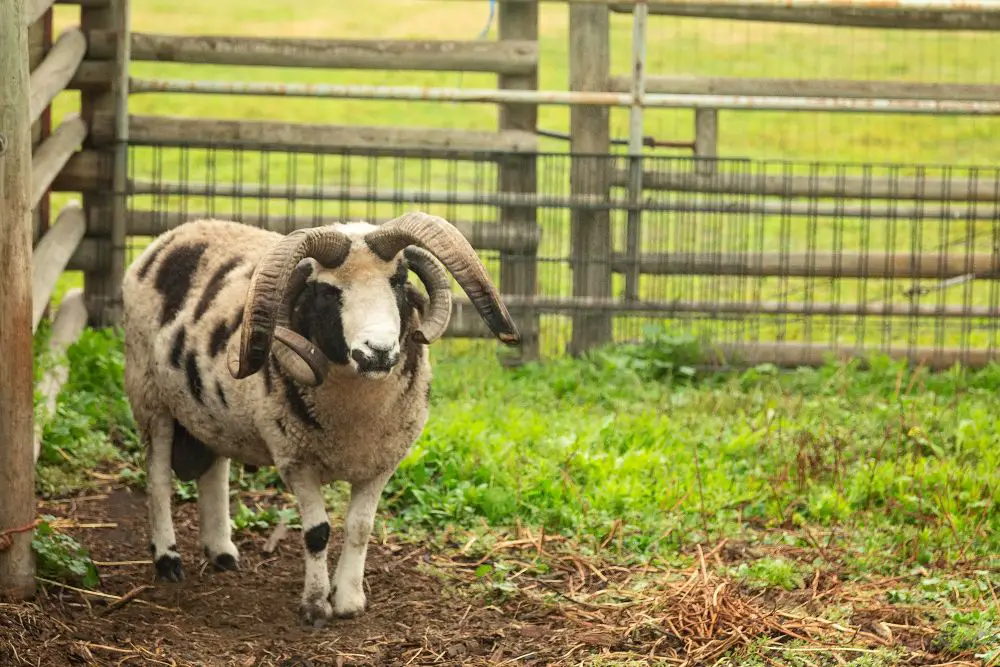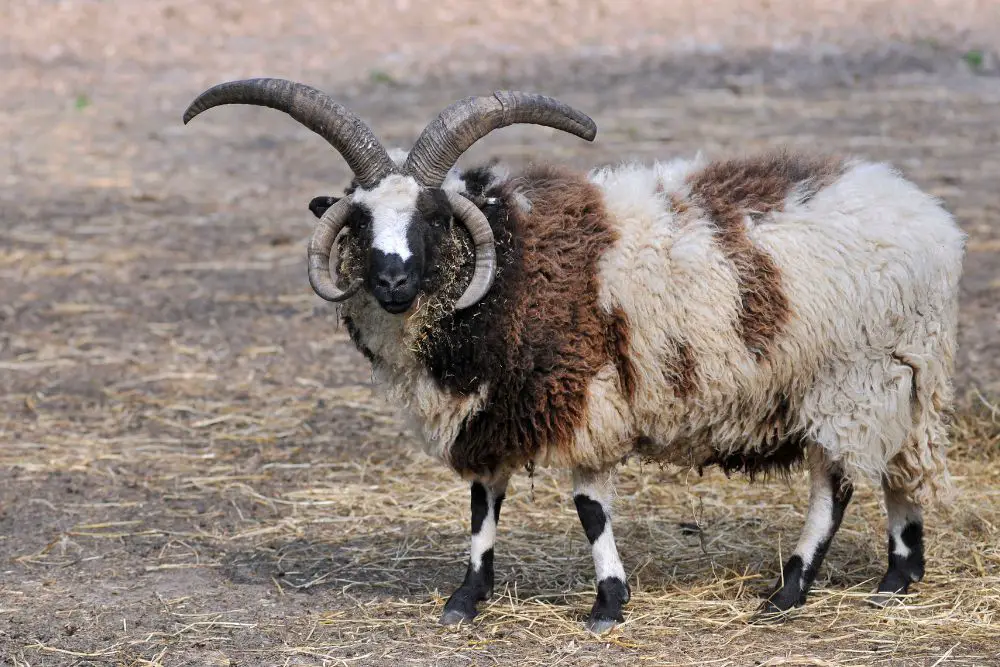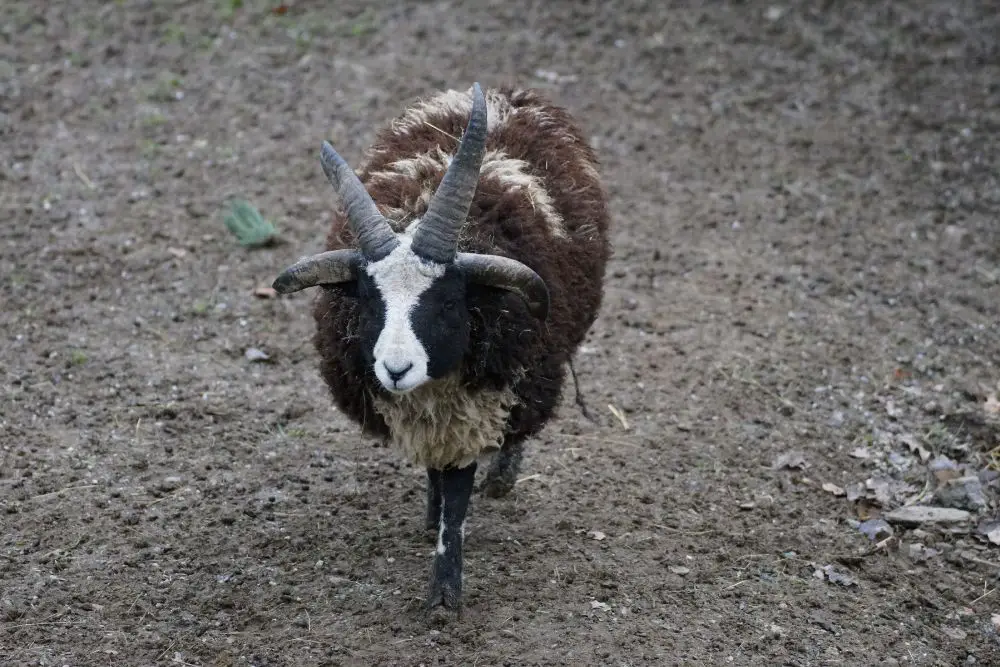Jacob Sheep (Ovis Aries) thrive in both extreme heat and extreme cold and look very similar to goats. They may be the perfect choice for you if you are seeking a rare breed of domestic British piebald sheep that produces both quality wool and plentiful mutton.
This article covers the history of the Jacob sheep, their breed attributes, and examine the characteristics of their rather unique wool in detail.
Table of Contents
Jacob Sheep Origins
Jacob sheep are a British breed that have been around for hundreds, if not thousands of years. They were named in the 20th century after the biblical story of Jacob who mentioned similar characteristics to his flock of sheep in the Bible.
While some people believe Jacob sheep are the same breed that is mentioned in the Bible, various sheep experts who have genetically tested the sheep state that Jacob sheep are more closely related to primitive breeds in Africa and Asia.
Prior to being named Jacob sheep, they were known as Spanish sheep and were popular ornamental sheep kept on large estates by the British aristocracy in the 18th century. Jacob sheep were not imported to North America until the early 1900s and have only come over in small quantities since then.
However, there has been a split between the Jacob sheep of Europe and the American Jacob because selective breeding has occurred in Europe, while in America the breed has been left alone and maintains its historical characteristics.
The Jacob Sheep Breeders Association was founded in 1989 and was the first breeders association for the Jacob breed since their arrival in America. The JSBA has worked with the Livestock Conservancy to maintain and bolster the population as this sheep is considered rare and at risk.
Characteristics of the Jacob Sheep
The Jacob sheep is a piebald and polycerate sheep with a small to medium body size, producing a lean carcass and a heavy medium fine fleece.


| Characteristics | Description |
| Origin | Britain |
| Appearance | A goat-like appearance with good conformation and small, triangular heads paired with two to six horns that are black or black and white. Testicles of the Jacob ram have no wool and are tight against the body. Udders of the Jacob ewe likewise are wool-free and close to the body, which differentiates them from modern breeds. The body of the Jacob breed should be more than half white, with spots of either black or lilac patches in a random pattern on their hide. Their skin is pink, and their hooves are usually black. |
| Wool | Micron range from 32 to 34. The USDA wool grade of the Jacob sheep is between 48’s to 56’s with a staple length that is between 3 and 6 inches, with a grease fleece weight of 3 to 6 pounds. |
| Weight | Rams should be between 120 and 180 pounds whereas the Jacob ewe should weigh between 80 and 120 pounds. |
| Fertility | Jacob ewes make wonderful mothers with minimal human interference, and occasionally will birth triplets |
| Meat | Plentiful with minimal external fat |
| Environment | Handles extreme climates very well, but does best in smaller flocks |
| Common Uses | Both meat and fleece production |
What Kind of Fleece Does the Jacob Produce?
This heirloom breed of sheep from England produces medium-grade fine fleece that is well known for having little lanolin content and contains both black wool and white wool.
Why Should You Raise Jacob Sheep?
There are many reasons why you should consider raising Jacob Sheep either from the United Kingdom or North America on your sheep farm:
- Known as an old-world heritage breed that is largely unimproved (little selective breeding)
- Ornate and beautiful polycerate (horned sheep) that can have 2 to 6 horns
- Piebald sheep have unique markings to easily identify flock members
- Better than modern breeds in terms of lanolin content and wool production
- Weavers and hand-spinners appreciate their lustrous and uniquely colored fleece
- They have little external fat and plentiful meat
- Jacob ewes are wonderful mothers and may birth triplets
- Ewes typically don’t need human help during lambing
- Do well in small flocks
- Shelter requirements are minimal
- Produces both black and white wool
- Low maintenance
- High resistance to parasites
- Rarely has problems with their hooves
- Have individual personalities and are naturally curious
What Health Problems do Jacob Sheep Have?
While there are many reasons to raise sheep like the Jacob sheep, there are also a few rare genetic issues that have been observed in some populations.
- Jacob sheep are known to have split-eyelid which is likely linked genetically to the polycerate gene. This condition is painless but may be severe enough to split the eyelid completely.
- Tay-sachs disease has been observed in 4 lambs and the trait has been found within a population of 50 Jacob sheep in the United States

